3 criteria for choosing the best bag: Capacity, Weight, Comfort
There are three main criteria to take into account when choosing your backpack:

Whether you’re going out for a few hours, a day hike, fast hiking or several days with your gear on your back, we’ve got the right backpack for you! Find out what criteria you need to take into account when choosing your hiking backpack.
To choose the best equipment for you, we have identified some criteria to consider. They should be taken into account when you decide how you want to use it or the need if you have already identified it.
There are three main criteria to take into account when choosing your backpack:
Capacity
- Capacity: this is the bag’s storage capacity, measured in litres. The greater the capacity, the more equipment you can carry. For a long hike or trek lasting several days, a large bag will be essential for carrying your equipment, sleeping bag, clothes and accessories. On the other hand, for a day’s outing, a 20–30 litre bag will be sufficient. Adapt the size of your backpack to the length of your adventure and the equipment you need to take with you.
WEIGHT
The weight of the backpack is also important, especially if you plan to carry it over long distances. A lightweight backpack will reduce the total weight of your load and make it easier to move around. However, it is important not to sacrifice the strength and durability of the backpack in favour of something that is lightweight.
COMFORT
Comfort is essential, especially for long hikes. Opt for a backpack with well-padded shoulder straps, waist belt and back to distribute the weight evenly. The ventilation system in the back is also important to avoid excessive sweating. Some bags offer additional adjustments to enable the bag to be adjusted to your body shape, ensuring better support for your body when walking.
Other criteria, such as water resistance, pockets for organising your belongings, or compatibility with a hydration system, may also influence your choice. Make sure the bag is suitable for the conditions you’ll be hiking in, and that it is waterproof or has a waterproof cover to protect your equipment in case of rain. Finally, think about the activity you’ll be doing (hiking, trekking or camping), so that you choose a backpack that perfectly meets your needs.
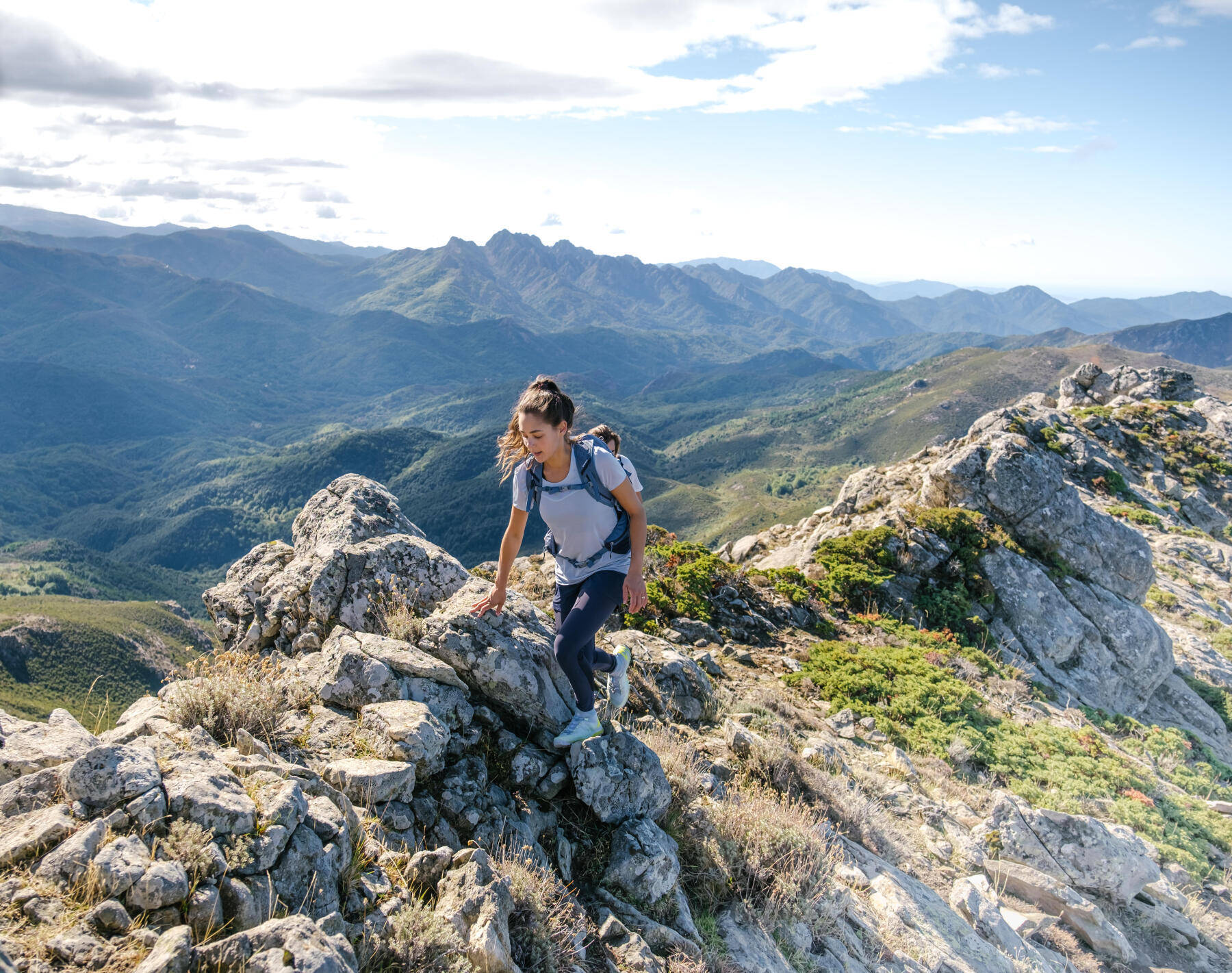
Whatever you choose, make sure you choose a backpack that has enough storage space and suits the way you like to organise your belongings. Some people like to use the pockets on the stomach belt, others don't, etc. Then make sure that the bag has all the adjustment features to provide optimum comfort. For long walks, opt for bags with reinforcements in the back, a chest strap, load-retention straps and a length-adjustable back to really fit you.
Finally, choose a travel bag that is light when empty, to protect your back as much as possible.
Please note:take the time to try out your bag in store and if possible load it with equipment to appreciate the carrying capacity and comfort. You can also borrow different bags from your friends to test them out in the field when full.
Choosing the right size of backpack is essential for your comfort and well-being when travelling or hiking. A backpack that is too small won’t let you carry all the things you need, while one that is too big will force you to carry an unnecessarily heavy weight. It’s therefore important to think carefully about your needs and how you will use it before choosing the size of your backpack. Depending on the length of your trip or hike and the number of items you plan to take with you, you can choose a small, medium or large backpack.
Don’t hesitate to make a list of all the things you plan to take with you before choosing your backpack, as this will help you to estimate exactly how much space you need.

A backpack with a volume of between 10 and 40 litres is ideal for everyday use and hiking.This type of bag offers a good balance between compactness and storage capacity, so you can carry your essentials without being weighed down. Perfect for day hikes, they are also practical for everyday use or sporting activities.
These hiking backpacks are perfect for occasional use on flatlands, in the forest or on the coast, and are also suitable for using around town on an everyday basis. Whether you’re commuting to work or school, these bags offer enough space to carry a laptop, a book, your lunch and your toiletries.
Their main advantage is their versatility, which makes them ideal for accompanying you on all your journeys, whether they involve outdoor activities or moving around town.
A backpack with a volume of 20 to 39 litres is perfect for this type of outing. Accessorised for hiking, you can easily slip in your water bottle or a small water bladder with a change of clothes. This format lets you carry the bare essentials with a minimum of weight while having easy access to your belongings.
Its advantages will be its comfort and its practicality to accompany your daily trips and walks.
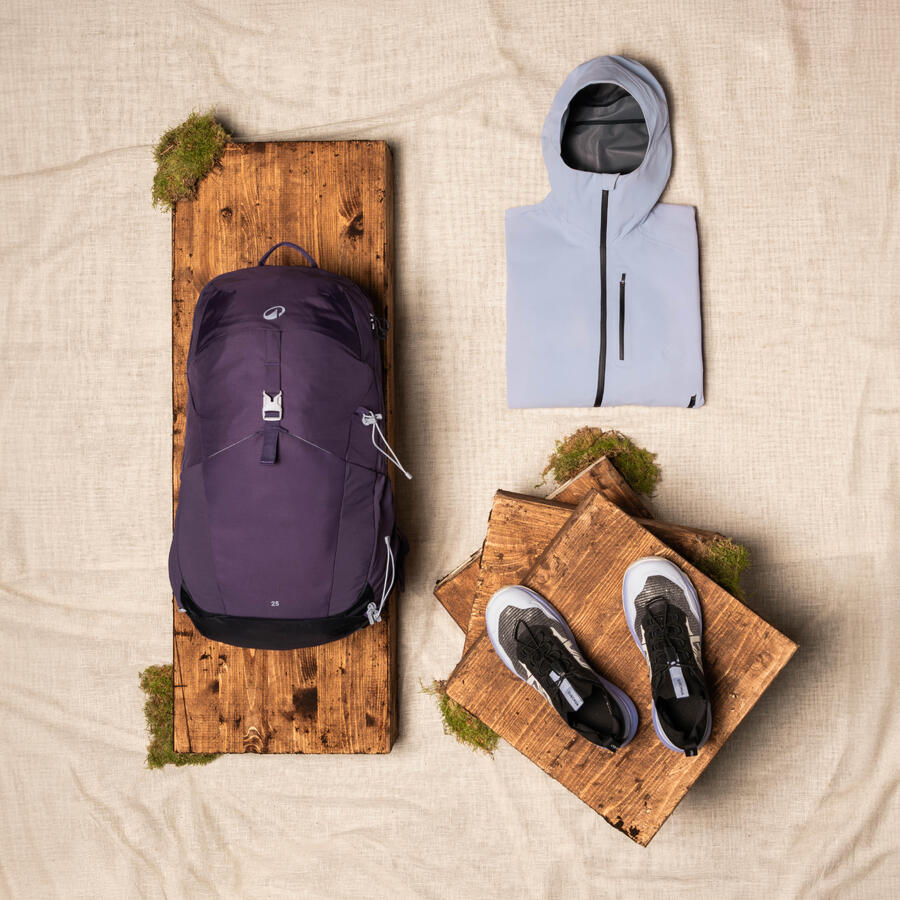
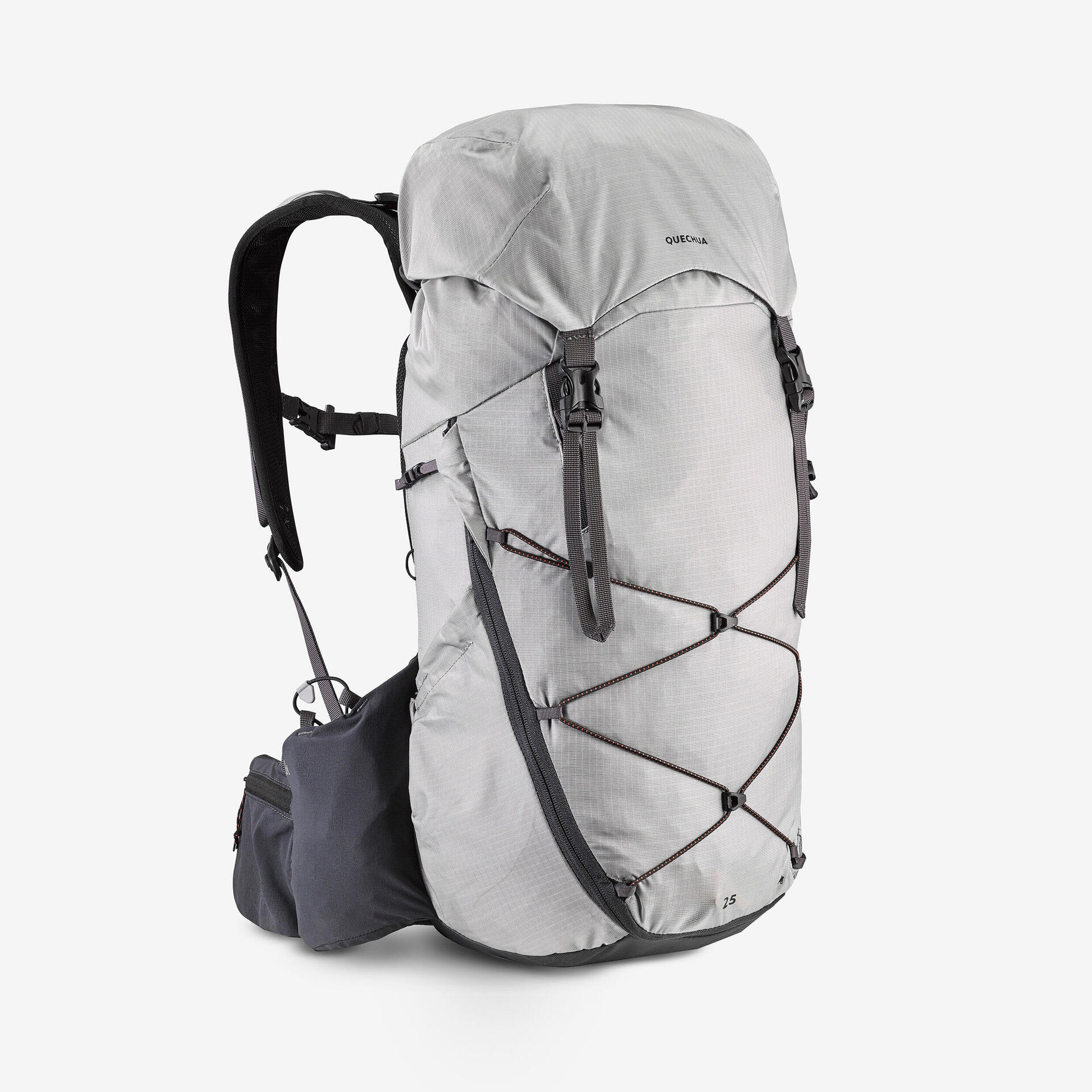
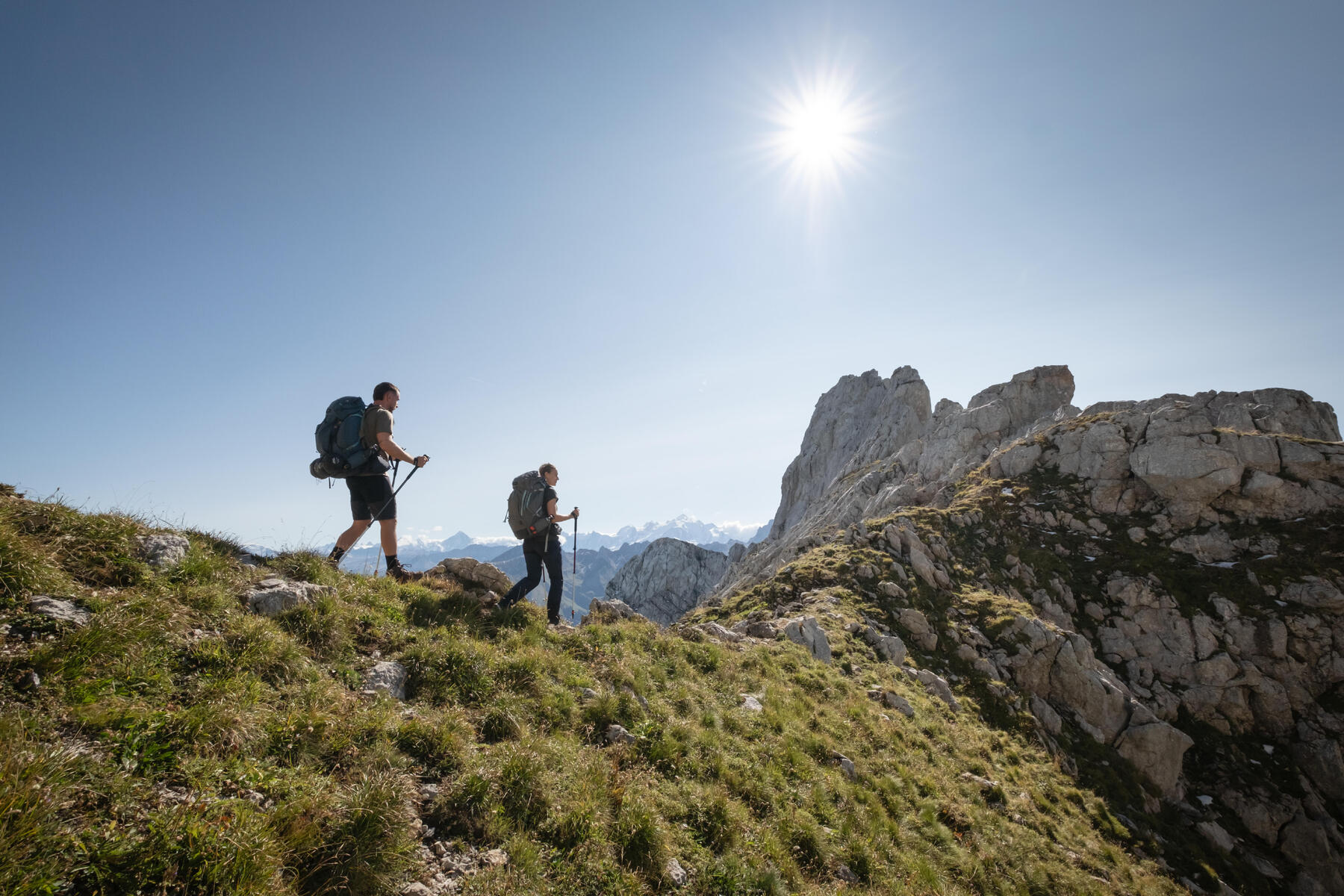
A backpack adapted for use in the mountains offers greater carrying comfort, which is essential for journeys that are often longer and more physical than a simple hike on flatlands. The size of your backpack will vary according to your activity and the equipment you need. For shorter outings, a small bag will allow you to carry the essentials, while for longer adventures or in the high mountains, a large bag will be essential for carrying your equipment, sleeping bag and other accessories.
For fast hikers, an ultra-light, body-hugging bag is essential. The aim is to cover as much distance as possible in as little time as possible, so all your equipment should be as light as possible. Don’t exceed 30 litres in volume or your bag will slow you down and you’ll end up doing classic hiking rather than fast hiking.
Its strengths are how lightweight it is and how comfortable it is to carry.
Is it your dream to go backpacking and discover new cultures? Have you even considered taking a year's sabbatical to prolong the adventure? Is becoming a backpacker your ideal life? Whether you're going on a three-week trip or a round-the-world trip, we have the right bag for you. The Forclaz Travel range has been designed to accompany backpacking adventurers around the world. Because your bag is going to be your home for a few days or several weeks, the Forclaz design team has focused on making their bags robust and safe. Its U-shaped zip provides a large opening and is as practical as a suitcase. As you'll be using your bag in transit, remember to take a smaller, compact bag which you can use when you set off to explore. And of course, as this is a backpack with a volume of over 50 litres, remember to test it loaded before you leave!
For a day hike, you need to have enough room to carry water and food.To cover up, you’ll need a windbreaker or waterproof jacket in case of rain and a fleece in case there is a sudden change in temperature. We recommend a hiking bag with a volume of 20 to 40 litres. They are a good compromise between durability and lightweight while being sleek in design. If you’re hiking with children, opt for the largest size so that you can carry as many things for them as possible. If you're adding an overnight bivouac to your trek, you can increase the capacity to 60 L to add all the extra equipment you'll need.


Do you enjoy immersing yourself in the mountains for several days? If you’re completely self-sufficient, you’ll carry your tent, water, food and everything you need to sleep well. So look for a bag with a volume of 50 litres or more. For large bags, look for bags that respect your body shape and have back reinforcements, a stomach strap, a chest strap, load control shoulder straps, padded shoulder straps, good ventilation and an adjustable back to really fit you. Comfort is essential if you're going hiking several hours a day for a few days. Our single watchword: try on your loaded bag in the shop and then try on your pack with all your equipment inside. This will prevent you from realising after several hours of trekking that the load in your bag was not well distributed.



These hiking backpacks are the most versatile. You can use them to carry your day-to-day essentials, but they can also be used by weekend hikers with a well thought-out packing list. Depending on the model, underneath the backpacks you will find trigger guards. They attach the straps and items outside the bag such as a groundsheet. The bags can also be designed with specific details such as being able to carry hiking or mountaineering gear.
These hiking backpacks are the most versatile. You can use them to carry your day-to-day essentials, but they can also be used by weekend hikers with a well thought-out packing list. Depending on the model, underneath the backpacks you will find trigger guards. They attach the straps and items outside the bag such as a groundsheet. The bags can also be designed with specific details such as being able to carry hiking or mountaineering gear.
We have selected a number of backpacks to suit your various needs. We have chosen the following criteria: practical and multifunctional bag / lightweight bag with large volume / ultra-light bag / durable bag.

NH ESCAPE 500 ROLLTOP
13 pockets to organise you
23 L
Perfect for everyday
large opening

DUFFEL 500 EXTEND
Travel bag
Variable capacity system
(40 to 60 L)
Strong bag
cabin baggage compatible
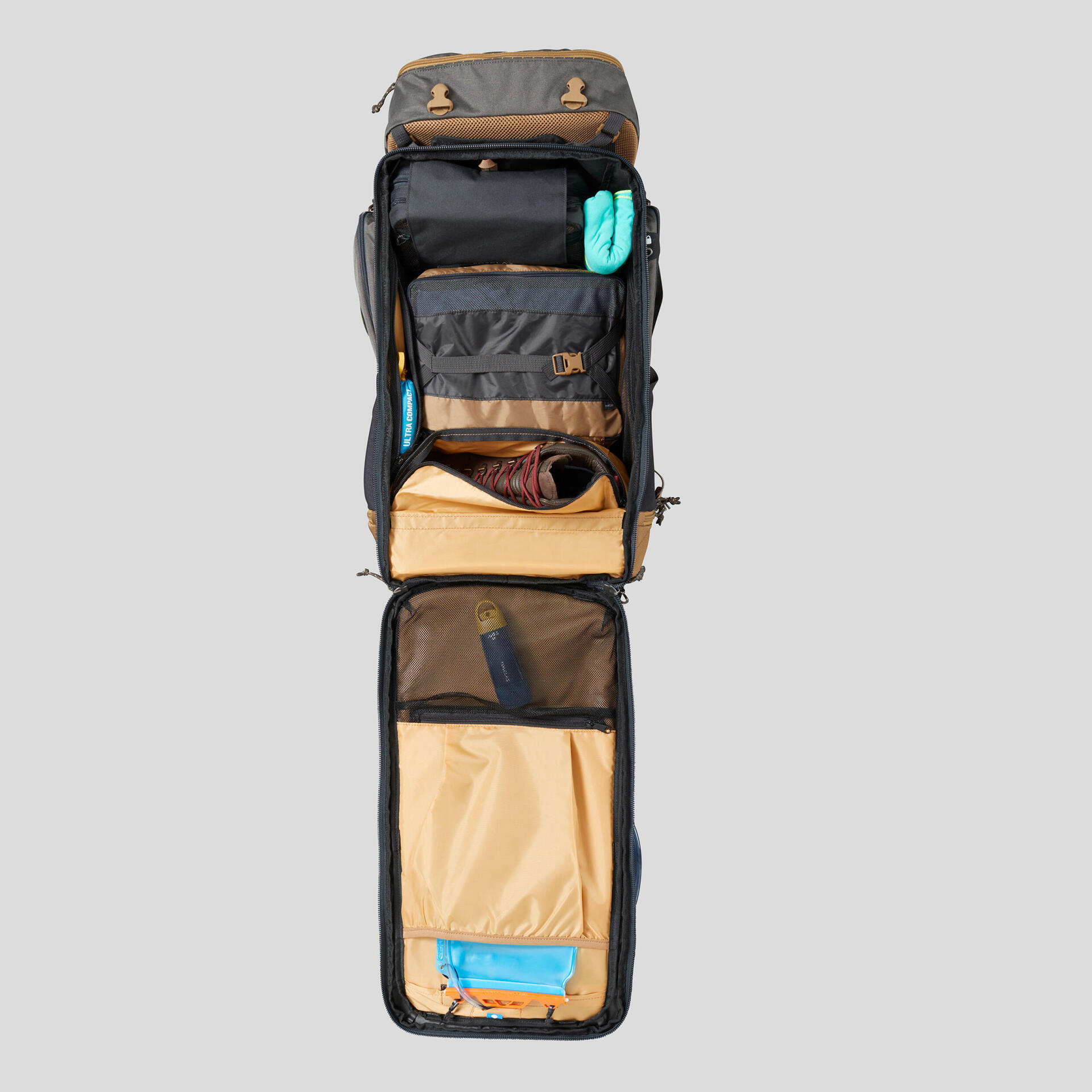
TRAVEL BACKPACK
TRAVEL 500
Comfort with the Easyfit system
Suitcase opening
Removable pouch
Large capacity
Do you need a lightweight bag with plenty of room to carry all your hiking gear? we have the right bags for you.

WOMEN’S TREKKING BACKPACK
MT900 UL
Volume: 45+10 L
Weight: 1.3 kg
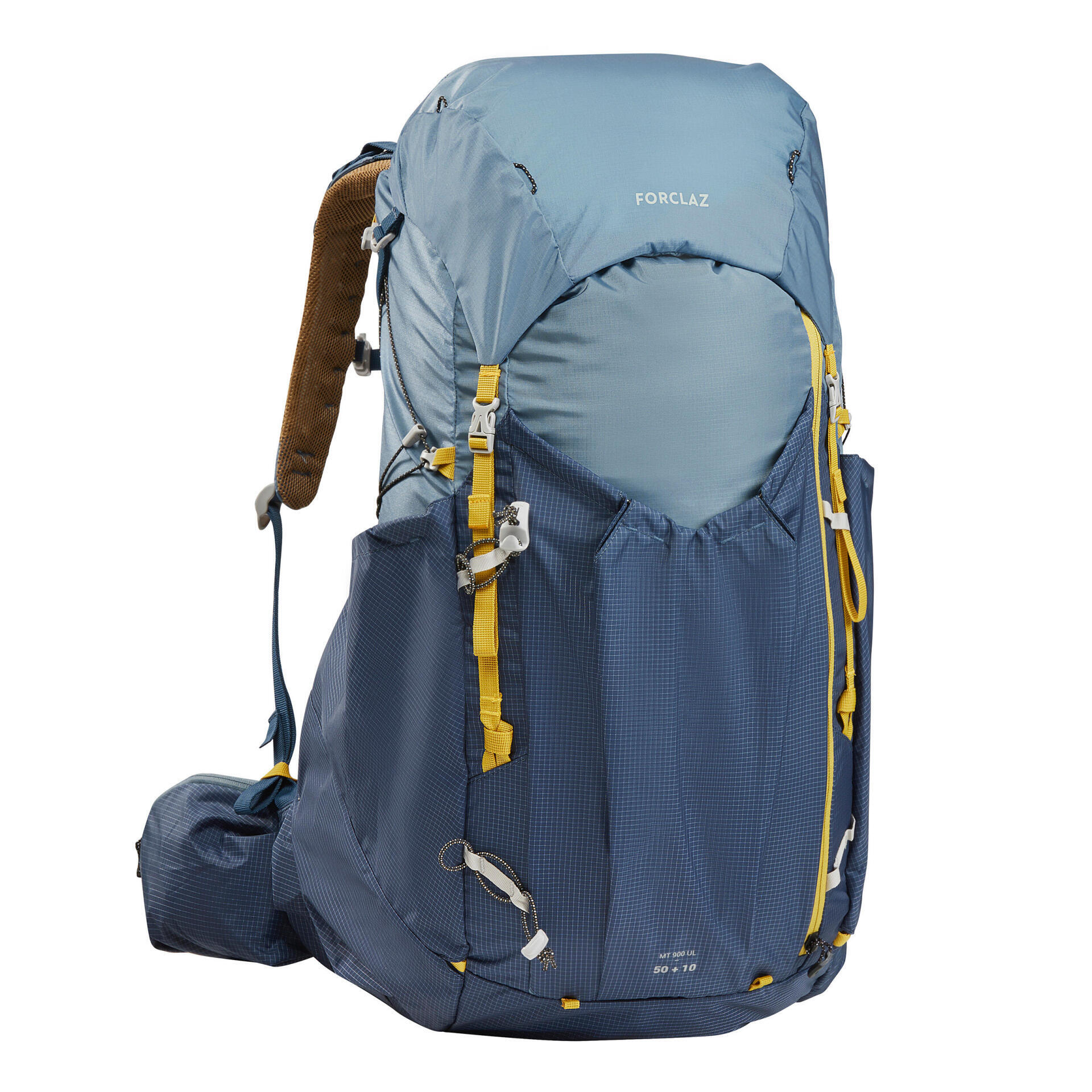
MEN’S TREKKING BACKPACK - MT900 UL
Volume: 50+10 L
Weight: 1.3 kg
Do you need an ultra light bag? We offer you two ultra light bags with small and large capacity.

ULTRA LIGHT BACKPACK
FH500
Volume: 17 L
Weight: 400 grams

TREKKING BACKPACK
MT900 UL
Volume: 50+10 L
Weight: 1.3kg
Do you need a durable backpack to take on your travels? We have the right bags for you. The more durable a bag is, the heavier it will be. If you need reliability and durability, these bags are perfect:

HIKING BACKPACK
NH ESCAPE 500
Volume: 23 L
Durable components and assembly
resistant to abrasion
10-year warranty
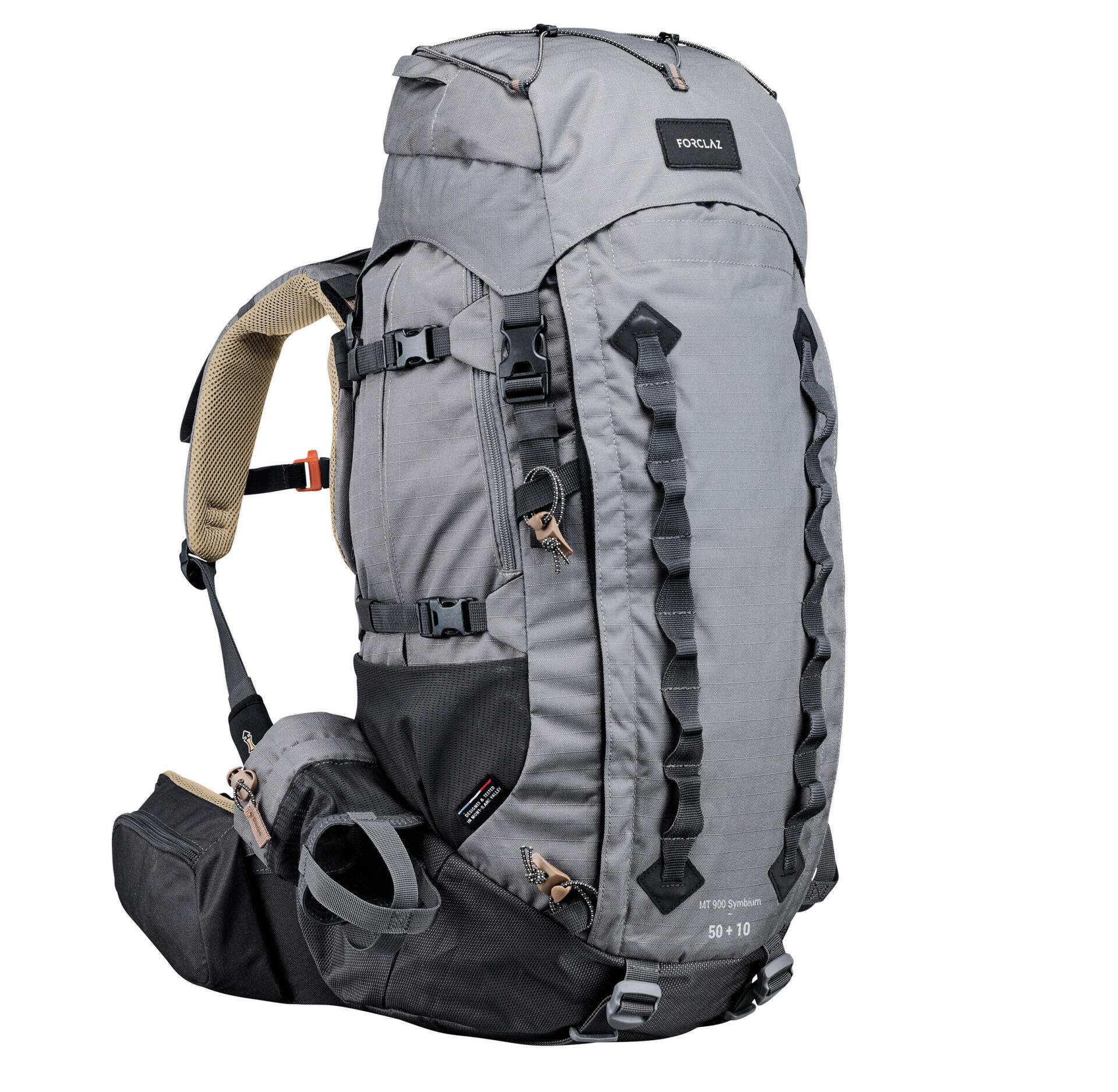
TREKKING BACKPACK
MT900 SYMBIUM
Volume: 50+10 L
600 denier durable polyester fabric
Reinforced polyamide bag base
10-year warranty
Junior hiking backpacks are specially designed to fit the body and back of young hikers. They offer optimum comfort with adjustable shoulder straps and a carrying system adapted to children. Some models are even adjustable, allowing the bag to adapt to your child’s growth, providing a long-lasting bag that can accompany their adventures in the great outdoors for years to come.
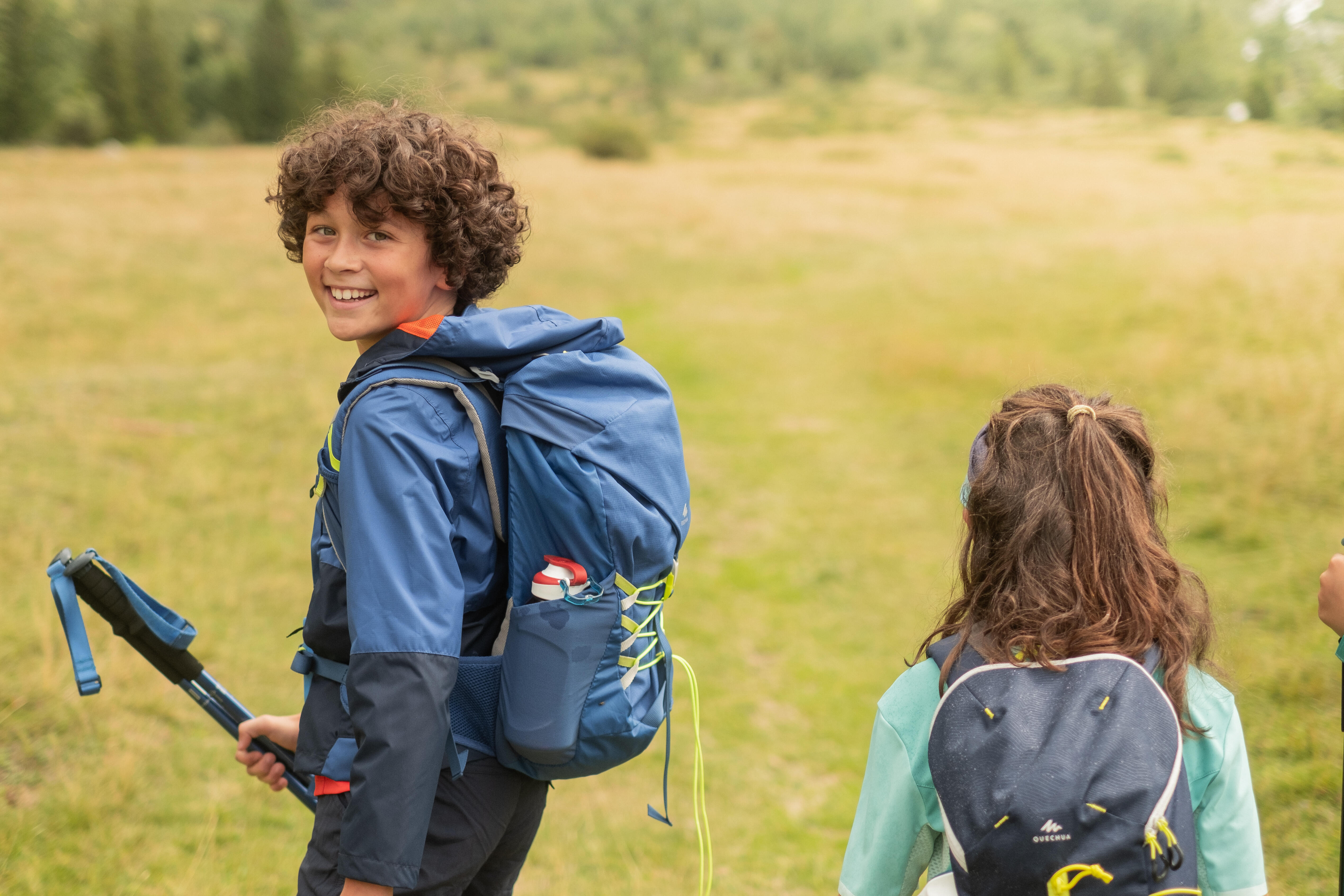
The capacity should be adapted according to your size and habits. Depending on your physical condition, don’t overload your backpack in order to keep your journeys enjoyable.
An adult can carry around 20–25% of their body weight on their back. Make sure you don’t exceed this limit, otherwise your back will become weak and you’ll wear yourself out during your journey.
Children should carry no more than 10–15% of their body weight (depending on their age). This limit is quickly reached if you are carrying a water bottle or water bag, snacks and a few items of clothing.
Because your hiking backpack is your most faithful companion, we do everything we can to make sure it stays with you! Abrasion and tear resistance tests, colourfastness tests, UV tests, washability tests, waterproofing tests, etc. Thanks to a demanding series of laboratory tests, we can validate the durability of our components (fabrics, foams, etc.). We also test our finished products to check the strength of the seams. The backpacks are then filled with weights and attached to a model which recreates the movements of a hiker fast walking, thousands of times. The length of your hike, i.e. whether you’re going on a day hike or a multi-day trek, will determine whether you need a small or large backpack.

My Top 3 walks: Anterne lake, the West Coast Trail and the Vercors (but I can't choose)!
I love: Going on adventures on forgotten footpaths, old shepherd or postal trails.
I don't like: people who throw their litter in the forest.